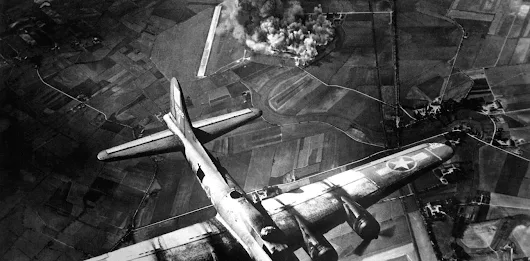23-12-6 Biden's Inflation Reduction Act: impact on world | FT > .
23-8-29 Understanding the Limits of Innovation || Peter Zeihan >> .
23-7-25 Silicon Triangle | USA, Taiwan, Xina: Semiconductors - Hoover > . full > .
23-4-16 R-U Hybrid Warfare: P00paganda, cyber, hybrid methods - Perun > .
23-3-2 Xina Leads US in Key Technology Research: Report | Focus > .
23-2-7 Why Xina is losing the microchip war - Vox > .
23-1-28 West Strangles Xina's Semiconductor Ambitions - Update > .
23-1-23 Xina’s Two-Year Tech Crackdown Winds Up | WSJ > .
22-12-6 Biden's Pro-American Present for Europe - PZ > .
22-10-12 Biden Bans Xina's Access to Advanced Semiconductors | Zeihan - now > .
22-8-28 Chip War - XiXiP vs CHIPS and Science Act - Update > .
EU 2023 ..
22-8-9 The CHIPS and Science Act (or Creating Helpful Incentives to Produce Semiconductors for America Act), also known as simply the CHIPS Act, is a U.S. federal statute enacted by the 117th United States Congress and signed into law by President Joe Biden on August 9, 2022. The act provides billions of dollars in new funding to boost domestic research and manufacturing of semiconductors in the United States.
It channeled more than $52 billion into researching semiconductors and other scientific research, with the primary aim of countering Xina. The bill passed the Senate by a vote of 64–33 on July 27, 2022. On July 28, the $280 billion bill passed the House by a vote of 243–187–1.
It channeled more than $52 billion into researching semiconductors and other scientific research, with the primary aim of countering Xina. The bill passed the Senate by a vote of 64–33 on July 27, 2022. On July 28, the $280 billion bill passed the House by a vote of 243–187–1.
The bill was considered amidst a global semiconductor shortage and intended to provide subsidies and tax credits to chip makers with operations in the United States. The Department of Commerce was granted the power to allocate funds based on companies' willingness to sustain research, build facilities, and train new workers.
The CHIPS Act includes $39 billion in tax benefits and other incentives to encourage American companies to build new chip manufacturing plants in the US. Companies are subjected to a ten-year ban prohibiting them from producing chips more advanced than 28-nanometers in Xina and Russia if they are awarded subsidies under the act.
The CHIPS Act includes $39 billion in tax benefits and other incentives to encourage American companies to build new chip manufacturing plants in the US. Companies are subjected to a ten-year ban prohibiting them from producing chips more advanced than 28-nanometers in Xina and Russia if they are awarded subsidies under the act.
America COMPETES Act of 2022 – original House version
United States Innovation and Competition Act – original Senate version
20-6-15 EU-US launch Trade and Technology Council to lead values-based global digital transformation:
European Commission President Ursula von der Leyen and President Joe Biden of the United States have launched the EU-US Trade and Technology Council (TTC) at the US-EU Summit in Brussels on June 15, 2021.
The TTC will serve as a forum for the United States and European Union to coordinate approaches to key global trade, economic, and technology issues and to deepen transatlantic trade and economic relations based on shared democratic values.
Chip shortage addressed by US-EU tech alliance: Manufacturing more computer chips in Europe and the US will be one of the key focuses of a new technology alliance between the two. The Trade and Technology Council (TTC) was unveiled following talks between European commissioner Margrethe Vestager and US President Joe Biden. The group will also seek to set common standards for new technologies such as artificial intelligence. Both sides are concerned by the rise of China as a technology superpower.
United States Innovation and Competition Act – original Senate version
The TTC will serve as a forum for the United States and European Union to coordinate approaches to key global trade, economic, and technology issues and to deepen transatlantic trade and economic relations based on shared democratic values.
Main goals of the TTC
- Expand and deepen bilateral trade and investment
- Avoid new technical barriers to trade
- Cooperate on key policies on technology, digital issues and supply chains
- Support collaborative research
- Cooperate on the development of compatible and international standards
- Facilitate cooperation on regulatory policy and enforcement
- Promote innovation and leadership by EU and US firms
This new Council will meet periodically at political level to steer the cooperation. It will be co-chaired by European Commission Executive Vice-President and EU Competition Commissioner, Margrethe Vestager; European Commission Executive Vice-President and EU Trade Commissioner, Valdis Dombrovskis; US Secretary of State, Antony Blinken; US Secretary of Commerce, Gina Raimondo; and US Trade Representative, Katherine Tai. Other Members of the College and of US Departments will be invited as appropriate, ensuring focused discussions on specific issues in a whole-of-government approach.
In parallel, the EU and the US have set up a Joint Technology Competition Policy Dialogue that will focus on developing common approaches and strengthening the cooperation on competition policy and enforcement in the tech sectors.






